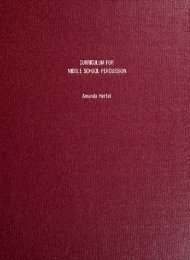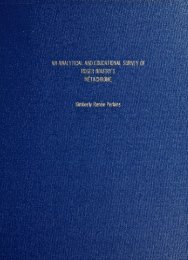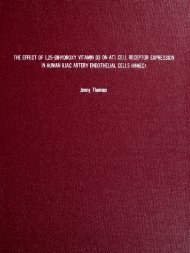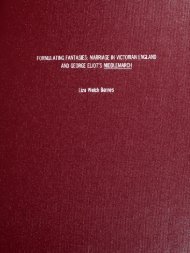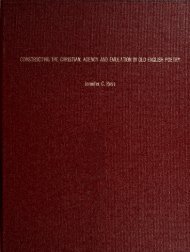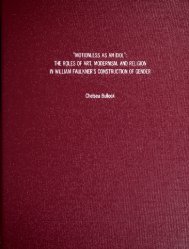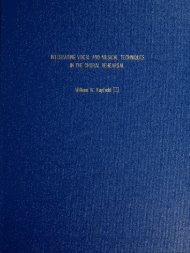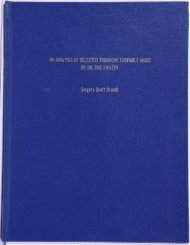An Analytical and Educational Survey of Howard Hanson's Dies ...
An Analytical and Educational Survey of Howard Hanson's Dies ...
An Analytical and Educational Survey of Howard Hanson's Dies ...
- No tags were found...
You also want an ePaper? Increase the reach of your titles
YUMPU automatically turns print PDFs into web optimized ePapers that Google loves.
18Chapter 3: <strong>An</strong>alysis <strong>of</strong> <strong>Dies</strong> NatalisIntroductionThe introduction <strong>of</strong> the work serves two primary purposes: to create a harmoniccenter <strong>and</strong> to create motion <strong>and</strong> interest by introducing melodic material. The beginning<strong>of</strong> <strong>Dies</strong> Natalis starts with a heartbeat: a steady pulse in the timpani, above which triadicharmonies are gradually layered. The rhythmic G pedal <strong>of</strong> the timpani establishes the root<strong>of</strong> the primary key center <strong>of</strong> the piece. Hanson has a certain affinity for the pedal in hiswriting: "I've been almost overaddicted to pedal points. I'm a pedal man <strong>and</strong> I'm inclinedto sit on the pedal for a long time, sometimes, perhaps, too long" (Williams, 1988, p. 18).The solo timpani continues for eight measures using quarter notes <strong>and</strong> simple eighth noterhythms interspersed. At this point, harmonic material is introduced above the G pedal, inthe chord progression G major 7 - e minor - G major 7 - C major 7. After the first cycle<strong>of</strong> progression, the seventh is dropped from the C major 7 chord. These half-noteprogressions are actually quoting two measures <strong>of</strong> the chorale, 45 <strong>and</strong> 46. This continuesfor an eight-bar phrase, changing color through instrumentation between trombones withbasses <strong>and</strong> clarinets, bassoons, <strong>and</strong> horns.Next, melodic material is introduced in four-bar phrases in the form <strong>of</strong> a perfectfifth heptad, discussed previously in the section on <strong>Hanson's</strong> compositional style. Thefollowing example is the first setting <strong>of</strong> the melody:In the internal structure <strong>of</strong> this melodic material section, four melodic lines appear. Thefirst begins on the seventh (F-sharp), the second begins on the root (G), the third begins



